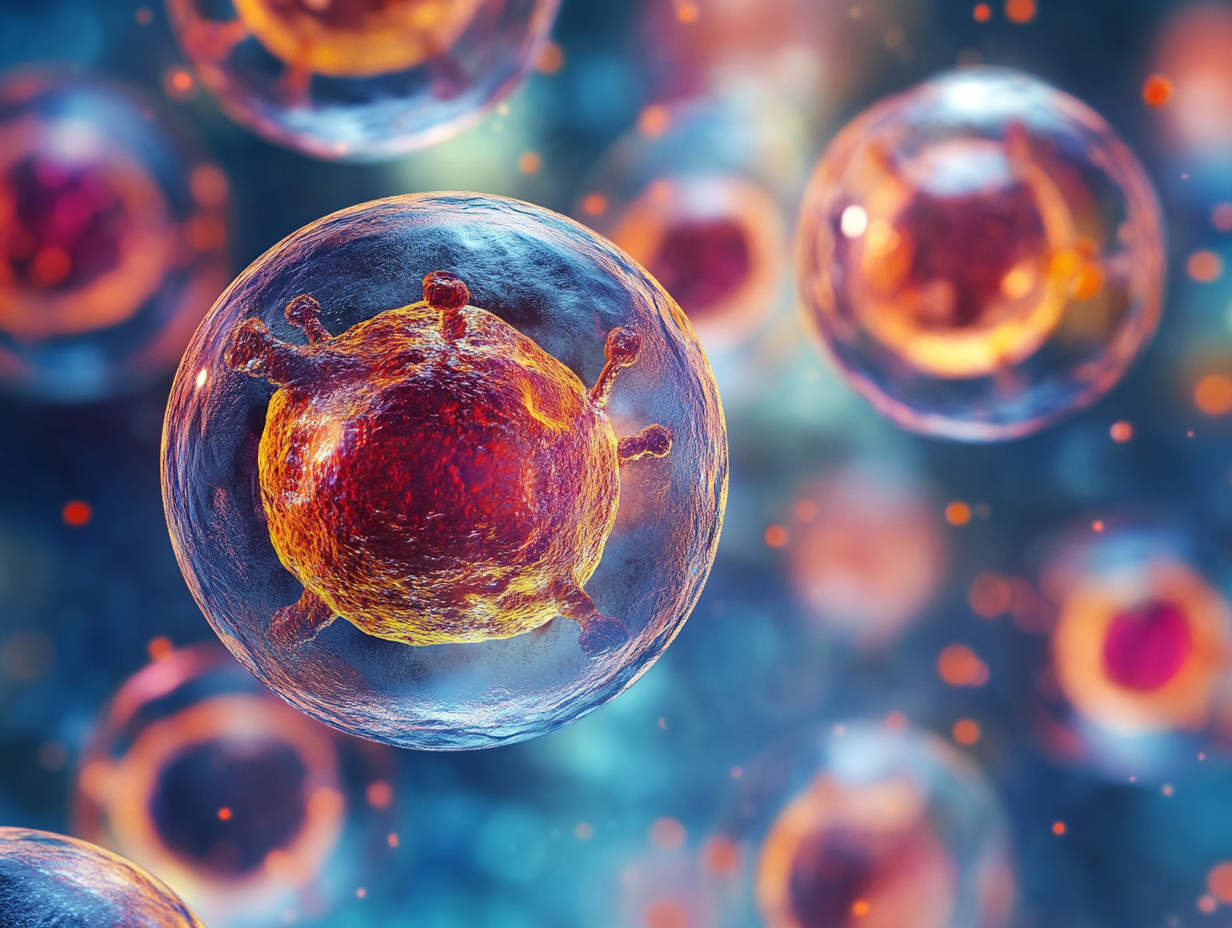PRP treatment (Platelet-Rich Plasma) and Stem Cell Therapy are a great combination in regenerative medicine. By harnessing your body’s superpowers, these therapies are making waves for their ability to heal injuries, rejuvenate tissues, and potentially turn back the clock on wear and tear. But how does it work?
If you’re considering Stem Cell Therapy, our team can guide you in deciding if it’s the right fit, help you choose the best clinic & region, and even assist you in securing some great discounts! Fill in our form here to set up a conversation.
What is PRP Treatment?
PRP stands for Platelet-Rich Plasma, a treatment that takes your own blood and supercharges it for healing. Here’s how it works:
- A small sample of your blood is taken.
- It’s placed in a machine that spins it quickly to separate the platelets, which contain healing growth factors.
- The concentrated platelets are then injected back into the area that needs healing—like a joint, tendon, or muscle.
People use PRP for many things, such as:
Skin rejuvenation
Joint pain relief, especially for conditions like osteoarthritis
Sports injuries
Hair loss treatments
What is Stem Cell Therapy
Stem Cell Therapy is like having a repair kit inside your body. It uses Stem Cells, the body’s master cells, which can transform into specialized cells like cartilage, muscle, or bone, or send signals to other cells to kickstart the healing process.
Here’s how it works:
- Stem Cells are collected from your body (often from bone marrow, fat tissue or umbilical cord tissue) or a donor.
- They’re processed in a lab to grow and concentrate their healing powers
- Injected back into the problem area, stem cells either directly repair damaged tissues or send out chemical signals to recruit your body’s natural healing mechanisms.
Stem Cell Therapy has shown promise in treating numerous conditions like:
Osteoarthritis and joint issues
Sports injuries
Chronic tendon problems
Anti Aging Treatments
Sexual Health like Erectle Dysfunction
Blood Diseases and more!
We go into more detail on how Stem Cell Therapy works here.
How PRP and Stem Cell Therapy Work Together
While both treatments are impressive on their own, PRP and Stem Cell Therapy is a powerhouse combination in regenerative medicine, offering promising results. Here’s why:
Stem cells regenerate damaged tissues or send signals to other cells to initiate the healing process, while PRP’s growth factors create the perfect environment for these cells to thrive.
The combination enhances healing, speeds up recovery, and often produces better results than either treatment alone.
Picture this: You’re planting a tree (stem cells). While the sapling can grow on its own, adding nutrient-rich soil and water (PRP) helps it grow faster and stronger. PRP boosts the effectiveness of stem cells, giving them the best chance to flourish.
Differences Between PRP and Stem Cell Therapy
| Feature | PRP | Stem Cell Therapy |
| Source | Platelets from your own blood | Stem Cells from your body or a donor |
| Primary Function | Enhances healing with growth factors | Repairs and regenerates damaged tissue |
| Best For | Mild to moderate injuries or conditions | More severe or degenerative conditions |
| Cost | Lower cost per session | Higher cost, but potentially longer-lasting benefits |
What are the benefits of PRP & Stem Cell Therapy
Combining PRP and stem cells brings out the best in both treatments. Here’s what you can expect:
Versatile Applications: From joint pain to cosmetic enhancements, this combo is a multi-tasker!
Enhanced Healing: PRP accelerates the regenerative effects of stem cells.
Non-Invasive: Avoid surgery while still targeting the root cause of the issue.
Long-Lasting Results: Stem cells rebuild tissue, while PRP boosts recovery.
Success Rates
Some studies show positive results for PRP and stem cell therapy, particularly for joint issues and soft tissue injuries. For instance:
Knee Osteoarthritis
A 2021 meta-analysis reviewed the combination of PRP and MSCs for knee osteoarthritis. The results showed improved outcomes for pain compared to traditional treatments
BMJ Open
Knee Osteoarthritis
The study from PLOS ONE titled “Modified Mesenchymal Stem Cells (MSCs), Platelet-Rich Plasma (PRP), and Hyaluronic Acid (HA) in Early-Stage Osteoarthritis” explores the use of these three therapies in combination to treat early-stage knee osteoarthritis
The combination of MSCs, PRP, and HA showed significant improvements in pain reduction and joint function
MSC & PRP Study
Can you do PRP and Stem Cells together?
Yes, and it’s often recommended! The synergy between the two treatments enhances healing and recovery.
What’s better, PRP or Stem Cell Therapy?
It depends on your condition. PRP is ideal for minor injuries, while Stem Cell Therapy is better for severe or degenerative conditions.
Is it worth combining PRP & Stem Cell Therapy?
PRP and Stem Cell Therapy are excellent options for anyone looking for non-invasive treatments that use the body’s natural healing power. The combination of these two therapies has shown to speed up recovery and offer long-lasting results, especially for conditions like joint pain and sports injuries.
But, it is early days & like with most cases in regenerative medicine, results aren’t always guaranteed and we are still gathering data to understand the long term side effects. To read more on the side effects on Stem Cell Therapy, check out this article.
We provide you with unbiased information helping you learn about Stem Cell Therapy & see if it’s right for you. Our platform can also connect you with the best clinics in the right areas & get you some cool discounts! Fill out our form here to learn more. ( Our Find a clinic page is coming soon!)
Stem cell therapy is like your body’s personal repair kit, used to fix and regenerate damaged tissues. Doctors often use it to tackle joint pain, arthritis, spinal cord injuries, and some autoimmune diseases. But that’s not all because scientists are also exploring how these super cells might help with conditions like Parkinson’s, heart disease, and even certain types of cancer. Exciting stuff, right?
The main downsides are mild pain at the injection site, temporary swelling, and variability in results.
Prices vary depending on the clinic, condition treated and country you’re in. For the US & UK expect to pay between $2,500 and $10,000 per session.
Fill in your details below
For a discounted offer for Stem Cell Therapy!






